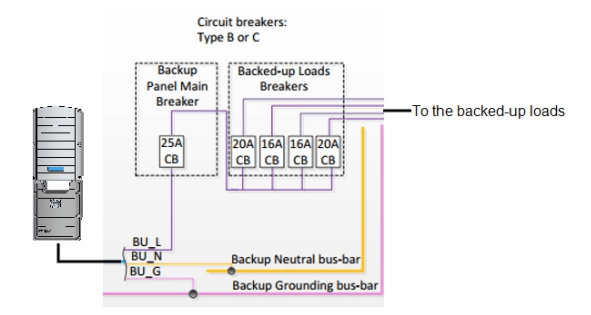Published in August 24, 2016
Battery storage is a powerful device that offers great flexibility and synergies with renewable energy generators such as solar pv.
A versatile and intelligent inverter is also required to truly exploit the benefits of energy storage devices. The StorEdge backup inverter offers a large variety of operating modes that allow certain loads in the household to continue running off the battery during a grid failure. Even if the backup functionality is not needed, the StorEdge backup inverter might still provide savings from both component pricing and installation costs.
Having battery storage available would usually imply a sense of security against grid failures and network interruptions. While it is true that a battery has the potential to supply power at these critical times, the inverter was not designed to provide uninterrupted/emergency power supply, so the lights would not turn on regardless of how full the battery is.
To illustrate this issue, when a grid-connected house experiences a black-out and the battery is still available to provide power to the loads, there is a chance that this power from the battery might be exported to the local electricity network. This creates a rather dangerous situation for tradesmen that are repairing the network as they would have assumed that all power was cut-off. Therefore, a backup inverter for uninterrupted/emergency power purposes would only be connected to the critical loads that were required to run during a black-out.
The SolarEdge StorEdge backup inverter has this functionality built into the one device through an integrated contactor switch. The installer would set up a backup panel either in the circuit board of the property or as a separate enclosed board depending on the space available. The backup circuit will connect to the AC backup output terminal of the inverter. A simple schematic of the setup is shown below.

When the grid fails, the internal contactor switch changes the output of the battery to the backup circuit and if the black-out lasts for a long time, the pv system can be also used to supply power to the backed-up loads during the day. All these mechanisms are done within the inverter rather than needing an external switching device.
Another unique feature of the backup inverter is that if backup is not required, the installer might still choose to use the StorEdge backup inverter but not build the backup panel. The product does not require its backup output to be wired to work like a normal grid-connected hybrid inverter. Compared to the normal SolarEdge string inverters which need an additional StorEdge interface to work, the backup inverter can be directly connected to both the Powerwall and pv system. This can potentially save installation fees and time when the backup panel is not required.
Both SolarEdge string inverters with the StorEdge interface and the backup inverter can be used to expand existing pv system by connecting to the added solar modules and the Powerwall without changing the existing system. As a result, the StorEdge solution would offer the most flexible design with the minimum amount of components and effort.